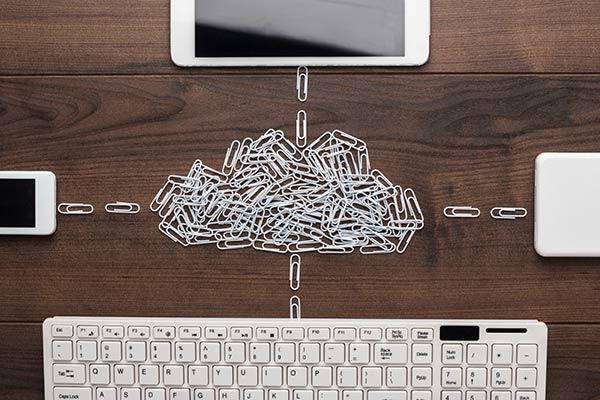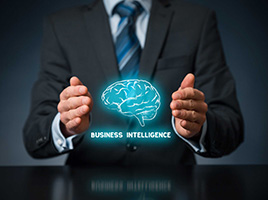CIOs are feeling pressure about moving enterprise IT to the cloud. But, moving IT to the cloud doesn’t mean ERP has to go too.Here is a different perspective;
CIOs and other information technology leaders are feeling the pressure to move systems to the cloud, including pressure not only from vendors who see the future of their products in the cloud, but from the CEO and the board. The cloud is capturing the imagination, and increasingly the budget, of not only technology organizations but everyone who believes in the potential of cost effective and agile IT.
These are symptoms of how the world of enterprise IT is changing, and changing dramatically. The cloud is not the only big disruptor, but is very much intertwined with the others on every CIO’s radar.

Consider:
- Machine learning, an offshoot of artificial intelligence research, continues to find practical applications with algorithms that find patterns in data and learn from experience. Uber and Lyft use machine learning to price rides and optimize routes.
- The Internet of Things (IoT) is the trend toward packing sensors, processors, and network connections into all sorts of objects from personal electronics, to doorbells, to crates of produce, making homes, workspaces, and the whole world part of an intelligent network.
- Blockchain distributed ledger technology first gained attention by enabling the creation of cryptocurrencies but also is being tested for applications such as sharing of electronic medical records between hospitals and healthcare facilities. Perhaps overhyped today, blockchain has the potential to rewrite the rules of business computing tomorrow.
Each of these depends on increasingly pervasive and reliable cloud technologies. As organizations learn to trust more data and applications to the cloud, they see the benefits of more interconnected systems and aggregated data. The machine learning insights that the ride sharing companies get so much mileage out of are realized partly because they pool data across all their operations, with smartphone apps and dispatch servers all as part of the same cloud. IoT and blockchain are likewise part of the cloud era, and we can expect to see many machine learning applications that are tied to IoT and blockchain networks.
Different ways of embracing the cloud
The challenge for IT leaders is to understand the broad trends without letting themselves be pressured into enterprise application decisions that go against the best interests of their organizations today. Broadly, the trend is for more software to migrate into the cloud, but it’s not a given that the cloud is the best option for every application. Nor should we confuse the many different uses of the cloud. At one end of the spectrum, you use Infrastructure as a Service (IaaS) resources to create or host cloud applications. At the other, you subscribe to complete Software as a Service (SaaS) cloud applications. Those are two very different ways of embracing the cloud. Most organizations will do a little of both, plus variations in between.
As someone who has studied the ERP market for more than 37 years, I see a big difference between saying “enterprises are moving to the cloud” and “enterprises are moving their ERP applications to the cloud” – particularly if by “cloud” we mean SaaS ERP.
I cover these issues in more detail in the research paper, “The World of Enterprise Apps is Changing – Time To Reroute Your ERP Roadmap?” That enterprises are embracing the cloud is undeniable. But moving their ERPs to the cloud, as in SaaS? Not so much, at least not yet, and probably not for a long time.
If we were to frame the question in terms of a new business, or a business that has just outgrown QuickBooks and is implementing ERP for the first time, a SaaS ERP product might make a lot of sense. Many larger businesses are also going “cloud first” by choosing SaaS wherever possible for new applications – and in many newer categories, such as marketing automation, SaaS products tend to be the best products and sometimes the only products you can buy.
That is very different from the question of whether to uproot an existing, stable, reliable, and business-critical application and migrate it to the cloud.
Moving ERP to the cloud?
ERP systems are some of the most complex software ever invented, and reinventing them as cloud native products may be the work of a decade or more. The major ERP vendors have created SaaS versions of their software, but they’re different enough that implementing them is almost always a large project rather than a simple upgrade. That means ditching investments in customizations, which are often important to tailoring an ERP to meet a company’s needs. At the same time, SaaS ERP is essentially a new outsourcing model for familiar software. There is nothing revolutionary or transformational about it. In fact, anyone making the leap needs to analyze what familiar functions and industry-specific capabilities are missing from the SaaS version.
Occasionally, we hear of SAP or Oracle ERP customers making the change anyway because they want to “start over.” However, most can’t afford to throw away the effort they have sunk into tailoring their existing system to meet their needs. They see the opportunity cost of recreating existing applications for the cloud, rather than investing in something new and innovative. Worse, they typically risk deeper lock-in if they let a single vendor not only provide essential software but control the interfaces and access to it, along with the underlying data.
Fortunately, there are other options:
- Consider hosting your existing ERP on IaaS cloud services. Leveraging IaaS to get your ERP out of the data center is the most cost-effective, least disruptive cloud option. It lets you capture price, performance, and flexibility advantages of the cloud without sacrificing years of investment in making an ERP meet your business requirements.
- Embrace SaaS services that integrate with your ERP to enhance and extend its core capabilities. Enterprise cloud software vendors have every reason to make their products work well with your ERP, but they tend to innovate faster than the ERP vendors do.
- In either scenario, if your ERP vendor is pushing you to migrate to the cloud with end-of-support deadlines for your current software, consider third party support as an alternative. Providers such as Rimini Street will support your current ERP and help you embrace cloud technologies where they make sense, without deadlines or ulterior motives.
Go cloud for innovation
These options reflect a fundamental change in the enterprise software market, where ERP is no longer the center of the universe. Monolithic ERP suites prevailed over the last 30 years when the goal was standardization and integration. Today, instead of efficiency alone, business agility and innovating how work gets done have become top of mind for business and IT leaders who are trying to figure out how to transform their business to compete in a digital world.
The innovation happening in the cloud is what makes it most interesting – not so much the technical details of the applications but the new thinking and flexibility they deliver to organizations looking to become more agile and capture new business opportunities. For many organizations, the best option will be to stick with their established ERP software but make enhancements around the edges by integrating with novel cloud applications. That way, they can translate the savings from optimizing current operations and systems into bold technology investments and business initiatives.
Get 2019 ERP Pricing: 45 different ERP systems profiled including Epicor, Microsoft, SAP and more. Click to download your free guide.





